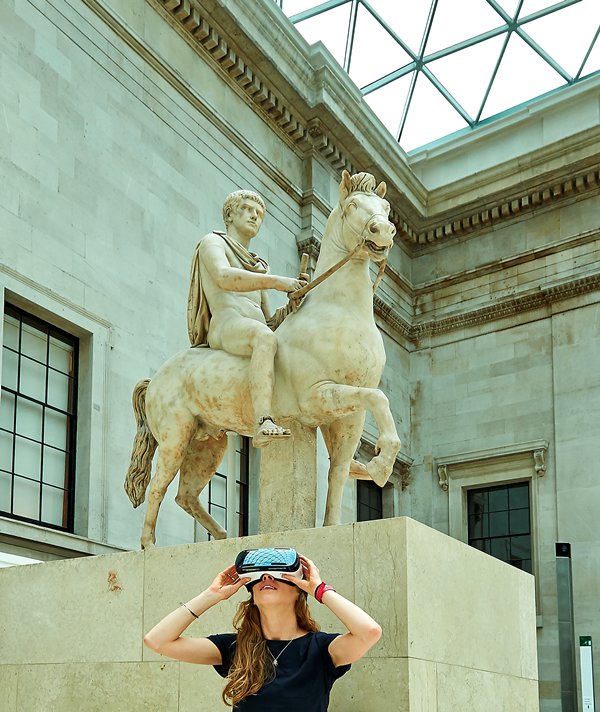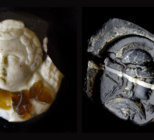Visitors will also be able to explore a virtual reality Bronze Age site in a 3D dome designed by Soluis Heritage, first seen at this year’s Museum + Heritage Show, where they will see 3D scans of objects from the Museum’s collection of this period, placed in their original setting.
Samsung Gear VR headsets will be available for individuals aged 13 or over to use. In addition, two other methods of accessing the virtual reality experience will be available: Samsung Galaxy 10.1” tablets and an Immersive fulldome. Family groups of 5 at a time can enter the fulldome, and use an interactive screen to explore the virtual reality world and 3D objects in the immersive experience.
Participants will be invited to navigate a virtual reality Bronze Age roundhouse within a settlement. Inside the house, visitors will be able to interact with 3D scans of objects from the British Museum collection.
The design of the Bronze Age roundhouse virtual reality environment has been informed by Dr Neil Wilkin, Curator, European Bronze Age collection at the British Museum. Participants will be able to explore multiple interpretations of how the objects might have been used in the past. Objects include two unique interlinked gold bracelets discovered at Woolaston in Gloucestershire, currently classed as Treasure, which the Museum hopes to acquire.

Visitors will also experience varied lighting and atmosphere, exploring a growing research area that suggests a ritual context to houses being aligned with the sun.
Chris Michaels, Head of Digital and Publishing at the British Museum, said: “The British Museum is constantly looking for new opportunities to innovate in the digital space. We are extremely excited to partner with Samsung on this virtual reality project. It gives us the chance to create an amazing new context for objects in our collection, exploring new interpretations for our Bronze Age objects. We can’t wait to share it with our visitors.”
The 3D scans of Bronze Age objects have been created by the British Museum’s Micropasts project, a collaborative venture with the British Museum and University College London, which creates open data sources of scanned objects. More information about this groundbreaking project is available at micropasts.org.
Teaching Key stage 2 students (ages 7-11) about ‘Britain from the Stone Age to the Iron Age’ became a statutory requirement in 2014. This autumn the Museum will begin trialing the VR experience within the SDDC Schools Programme to assess the capacity of this technology to enhance students’ learning about the Bronze Age.
For more on the British Museum’s teaching technology to youngsters see Jack Shoulder’s blog for M+H Advisor.
Main Image
Interior of a virtual reality Bronze Age roundhouse © Soluis Group Limited










